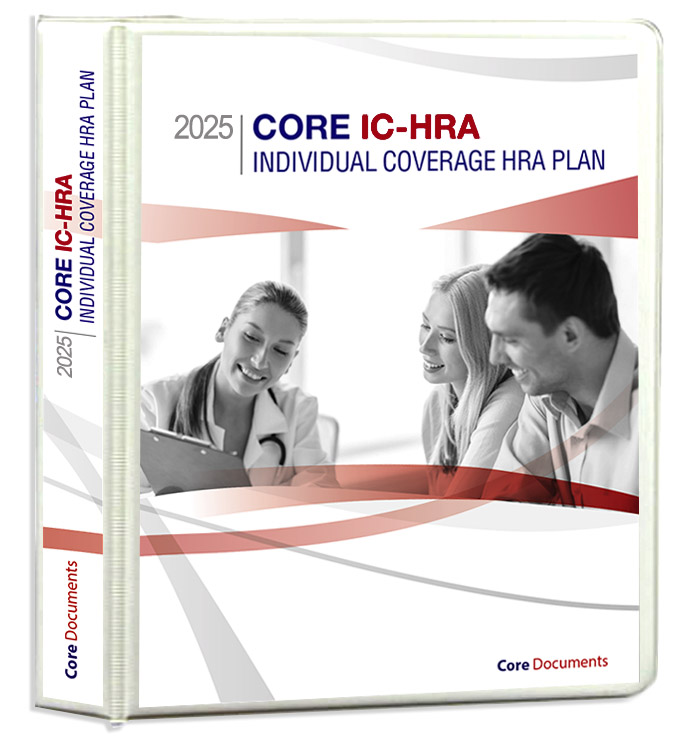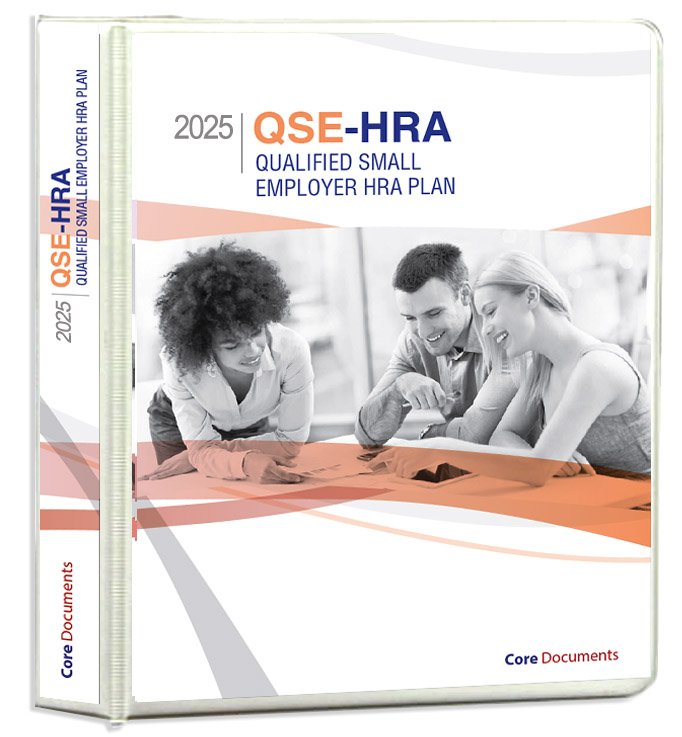Home / Blog / ICHRA or QSE-HRA -- Which is best for your business?
ICHRA or QSE-HRA — Which is best for your business?
The Individual Coverage HRA and the Qualified Small Employer HRA both free employers and their employees from the burdens of one-size-fits-all traditional group health plans. Yet, there are subtle differences between the two. Small employers evaluating these HRA designs for a best fit will find our ICHRA or QSE-HRA comparison helpful.

ICHRA or QSE-HRA — Which is best for your business?
Small businesses across the country were relieved when the Qualified Small Employer Health Reimbursement Arrangement (QSE-HRA) came into law in late 2016. Finally, there was an affordable health coverage option for small employee groups. The plan was quickly adopted by thousands of small employers and remains extremely popular today.
In June 2019, President Trump announced continuing HRA expansion with the Individual Coverage HRA (ICHRA) for plan years beginning January 1, 2020, and later. Like the QSE-HRA, the ICHRA reimburses employees for their purchase of health insurance and related expenses, but without the employee group size limit of fewer than 50.
Most of the ICHRA news celebrates opening up the QSE-HRA to larger employee groups. And, as far as the ICHRA bringing more choice and savings to both employers and employees, that’s true.
But the ICHRA is not exactly the same as the QSE-HRA, and we think it’s important that small employers considering a change to the new model know the differences between the two plans.
Our comparison chart provides a quick glance of the most prominent rules governing each HRA. Following this, we go in-depth on a few of the differences that may matter most to employers considering an ICHRA or QSE-HRA.

H R A C O M P A R I S O N C H A R T
QSE-HRA vs. ICHRA
| Plan Features |
QSE-HRA |
ICHRA |
| No. employees, minimum |
1 |
1 |
| No. employees, maximum |
49 |
Any |
| Annual funding limit |
$5,250 self-only or $10,600 family, adjusted annually |
None |
| Employer can limit types of reimbursements |
Yes |
Yes |
| Integrates with Medicare1 |
Yes |
Yes |
| Integrates with group health plan (spouse, parent) |
Yes |
No |
| May offer group health plan to other workers |
No |
Yes |
| Premium Tax Credit |
Yes
(offset by QSE-HRA) |
No
(annual opt-out option) |
| Proof of MEC |
Yes |
Implicit |
| Substantiation of coverage – Annual |
Yes |
Yes |
| Substantiation of coverage – Ongoing |
Yes |
Yes |
| Reliance upon substantiation |
Yes |
Yes |
| Reimbursements tax-free to employees |
Yes |
Yes |
| Pay balance of premium via Section 125 plan |
Yes |
Yes |
| Coordinates with HSA |
Yes2 |
Yes2 |
| Coordinates with FSA |
No |
Yes3 |
| Allows reimbursements without health coverage |
No |
No |
1Medicare Part A only, Parts A and B, or Medicare Advantage plans qualify as MEC.
2When QSEHRA reimburses premiums only or ICHRA reimburses premiums only or premium plus post-deductible expenses only.
3When FSA pays excepted benefits only.
©2020 Core Documents, Inc.
ICHRA or QSE-HRA: explore the differences
Now we’ll take a quick look at the differences between the Qualified Small Employer HRA and the Individual Coverage HRA.
No. of employees
The QSE-HRA is limited to employee groups of fewer than 50 while the ICHRA is open to any size employee group.
Annual funding limit
Employers sponsoring an Individual Coverage HRA may provide as much as they want for the annual benefit amount. Qualfied Small Employer HRAs in 2022 may fund up to $5,450 annually for participants with self-only coverage and up to $11,050 annually for those with family coverage.
Integration with group coverage
With a QSE-HRA, pending the HRA’s reimbursement rules set by the employer, an employee covered by a spouse’s or parent’s employer-sponsored group health plan may receive reimbursement for non-premium medical expenses.
However, the ICHRA does not allow integration with any type of group health plan, including that of a spouse or parent.
Group health plan for other employees
QSE-HRA rules do not allow an employer to offer a traditional group health plan to any active employees.
The ICHRA allows a group health plan for one employee classification group while an ICHRA is offered to another class. Within the same class of employees, the ICHRA has a grandfathering option that allows existing workers to continue under an existing group plan and offer the ICHRA for employees hired after the first date of the plan year (January 1, 2020, or later).
While the employer may set benefit terms per the above according to employee classification group or the grandfathering option, an employer must set terms for one or the other for these employees. A company may not allow any employee a choice between the group health plan or the ICHRA.

Premium Tax Credit
Employees with a QSE-HRA may receive the Premium Tax Credit (PTC) when purchasing health insurance on an ACA exchange. The amount of the PTC will be reduced by the amount available to the employee in the HRA.
Participants in an ICHRA cannot receive any portion of the PTC; however, the employer must provide opportunity (at least once per plan year) for employees to opt out of the HRA. Employees opting out of the HRA become eligible for the PTC.
If an employee with an ICHRA receives a PTC on the exchange, it may create a shared responsibility payment obligation for an employer with 50 or more employees, defined as an Applicable Large Employer (ALE). This is not an issue for QSEs with fewer than 50 employees.
Proof of MEC
QSE-HRA participants must provide proof to the employer that the insurance coverage they are buying meets Minimum Essential Coverage (MEC) standards.
ICHRA rules state that the employer may presume that any individual health coverage policy purchased on the open market or exchange, as well as Medicare, meets MEC standards.
Pay balance of premiums via Section 125 Plan
Employers may allow participants in both plans to pay individual health coverage premium amounts over the amount reimbursed by the ICHRA with pre-tax salary deductions through a Section 125 Plan. This means more tax savings for the participant as well as the employer. Plus, the business can offer workers an HSA and/or limited FSA through the same Section 125 Cafeteria Plan for even more tax savings (FSA for ICHRA only, see below).

Coordination with Health Savings Accounts
Both the Individual Coverage HRA and the Qualified Small Employer HRA are compatible with the high-deductible health plans (HDHP) required for Health Savings Account (HSA) eligibility. There is a subtle difference, though:
The QSE-HRA is HSA compatible when it only reimburses employees for health insurance premiums. There is no allowance within the rules for an employer to provide one type of reimbursement to employees with traditional coverage and another to those with an HDHP.
The ICHRA is HSA compatible when it only reimburses employees with HDHP coverage for individual health coverage premiums and/or post-deductible eligible medical expenses. The rules allow employers to base the type of reimbursements made by the ICHRA on employees having traditional vs. HDHP coverage.
Coordination with Flexible Spending Arrangements
Employees participating in an Individual Coverage HRA may also participate in a Flexible Spending Arrangement (FSA) that only reimburses for excepted benefits like vision and dental expenses.
An FSA may not be offered to employees provided a QSE-HRA, including an FSA limited to paying for excepted benefits.
Reimbursement to employees without health coverage
Neither the ICHRA or the QSE-HRA may make reimbursements for any medical expense submitted by an employee or on behalf of employees’ dependent without substantiation of health insurance coverage. There are no exceptions to this rule.
ICHRA or QSE-HRA: Which works best for you?
Small employers are more likely to better know their employees’ situations and needs, and that puts them in the best position to craft the best premium-reimbursement HRA for both business and workers.
The ICHRA is the most versatile of the two, especially when it comes to varying coverage amounts and terms for different employee classification groups. It also allows employers to grandfather existing employees under the current group health plan.
The QSE-HRA allows no group health plan for active employees, but employees can substantiate coverage under a spouse or parent group health plan, an option that can save big on premium dollars spent and reimbursed. Plus, qualifying participants may retain a portion of their PTC to help with premium payments.
Employers choosing the ICHRA can allow employees to make balance of premium payments tax-free through a Section 125 Plan, as well as pay dental and vision expenses through a limited FSA, an option not open to QSE-HRA participants. All pre-tax transactions and contributions employees make via a Section 125 POP or Cafeteria Plan increase employer tax savings, too.
Core Plan Document package for ICHRA or QSE-HRA
Whichever plan you choose, be sure to meet the written plan document requirement with a Core QSE-HRA or Core IC-HRA Plan Document package. For one low price, these packages provide employers with everything necessary to set up an IRS- and DOL-compliant QSE-HRA or ICHRA with all disclosures and notifications to employees mandated by the agencies for these benefit plans.
And, our friendly and knowledgeable consultants are ready to help with plan design tips and answers to all of your questions. Just give us a call or drop us a line. No fee or obligation at all for these services.
Core IC-HRA Plan Document package
 Deluxe Binder Version
$199 in PDF via email*
$249 in PDF email* + Deluxe Binder via USPS
Order Online

*Basic plan design
|
|
Core QSE-HRA Plan Document package
 Deluxe Binder Version
$199 in PDF via email*
$249 in PDF email* + Deluxe Binder via USPS
Order Online

|
No annual fee — Core Documents will notify you when there are sufficient changes in the Code to require amending and restating your Plan. You can amend and update anytime, and only when necessary, which is the most cost-effective way to maintain a HRA Plan.
Fast Service — Most orders placed by 3 PM are returned via email the same day, Monday through Friday. Weekend orders are sent out Monday morning. Plan document packages are processed in the order received. During our busiest months (December, January, and February), the rush order fee (see order form) marks your document to be processed immediately.
Refund Policy: Goods and services provided by Core Documents, Inc. are non-refundable upon receipt. Orders cancelled prior to shipping are subject to a fee to cover the cost of goods and services provided during the review, draft, and preparation of your order.
The Trusted Source of Affordable Benefit Plan Documents for over 20 Years.
Core Documents is the country’s leading provider of cost-effective, tax-saving benefit plan documents for Section 125 Cafeteria plans and Health Reimbursement Arrangements. The Trusted Source since 1997, thousands of satisfied agents and employer groups nationwide rely upon Core Documents for free plan design consulting services, plan document updates, ERISA Wrap SPDs, and administration services.